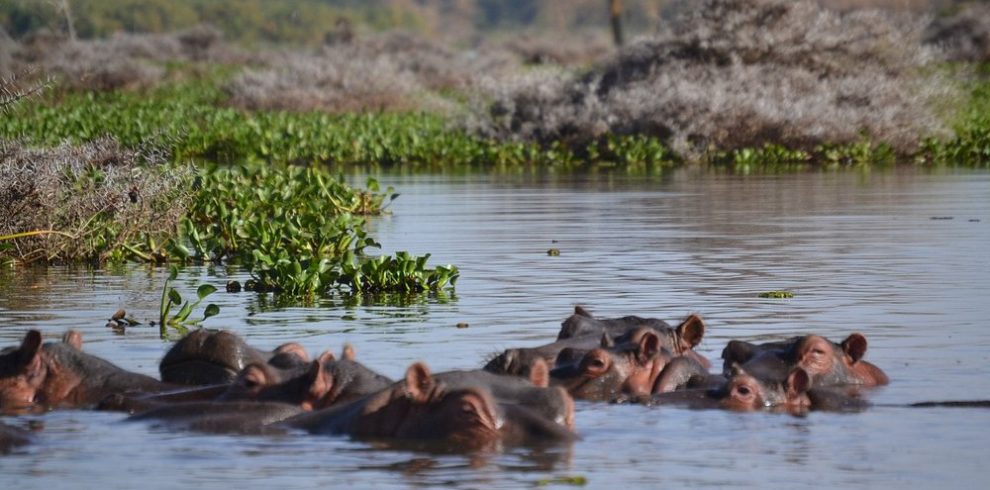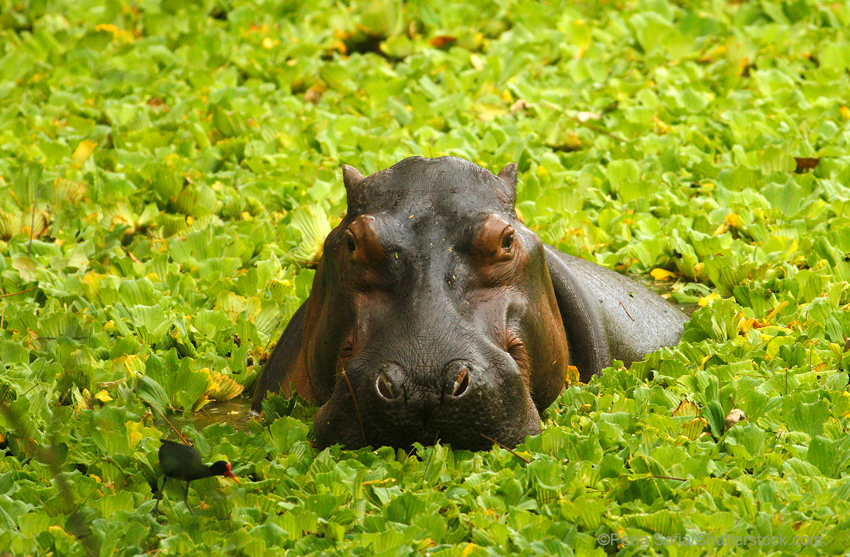
The hippopotamus, or Hippopotamus amphibius, is one of Africa’s most iconic and enigmatic animals. Known for its large size and seemingly docile nature, the hippo is often misunderstood. While it may appear lazy or gentle, the hippopotamus is a powerful and territorial animal, with an array of adaptations that make it uniquely suited to its environment. In this article, we will explore 5 fascinating facts about the hippo, delving into its behavior, biology, and role in the ecosystem. These insights will provide a deeper understanding of this incredible animal and highlight why the hippo is far more than meets the eye.
1. The Hippo Is One of the Largest Land Mammals
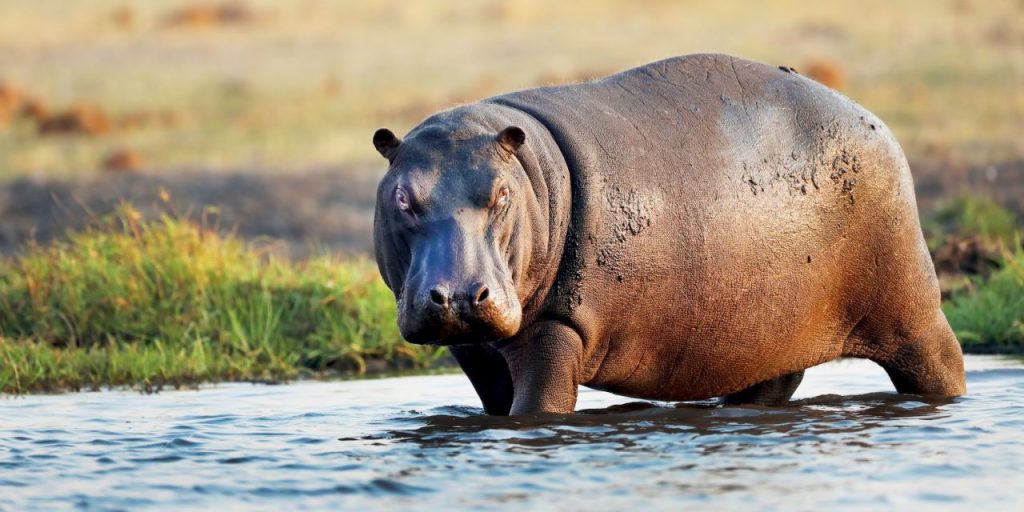
One of the most striking facts about the hippo is its immense size. The hippo is the third-largest land mammal on Earth, only surpassed by elephants and white rhinos in terms of body mass. Male hippos typically weigh between 3,000 and 4,000 pounds (1,400 to 1,800 kilograms), while females are generally slightly smaller. Despite their large size, hippos are surprisingly agile and capable of moving swiftly both in the water and on land.
Size and Strength
The hippo’s massive size is not just for show—it plays a crucial role in its survival. A large body provides the hippo with strength and stamina, helping it defend itself against predators. While adult hippos have few natural predators due to their size and strength, young hippos are vulnerable to large carnivores such as crocodiles and lions. The hippo’s sheer weight is a deterrent to many potential threats. Despite their bulky appearance, hippos can run surprisingly fast on land. They achieve a maximum speed of up to 19 miles (30 kilometers) per hour, which makes them one of the fastest mammals per kilogram. They are fast and strong, dangerous adversaries when they feel themselves in danger.
Large Mouthed Giants
The hippo’s massive mouth is another feature that reflects its size. The mouth is capable of opening up to 150 degrees and its large teeth are utilised in defence, fighting and territorial disputes. Hippos have large canine and incisor teeth that can grow up to 20 inches (50 centimeters) long, which they use for display during confrontations with other hippos. Such teeth also serve in a fighting competition over territory Whereby the tusks of the males are used to dominate others.
2. Hippos Are Semi-Aquatic Creatures

Another fascinating aspect of facts about the hippo is its lifestyle as a semi-aquatic mammal. Although hippos are large, land-based animals, they spend a significant portion of their time in water. Hippos are particularly associated with rivers, lakes, and wetlands in sub-Saharan Africa, where they spend up to 16 hours a day submerged in water to keep cool and hydrated.
Adaptations for Life in Water
The hippo’s body is specially adapted for life in aquatic environments. Its bones are compact, so it sinks to the bottom of lakes and rivers where it walks or swims on the riverbed. The hippo’s nostrils, eyes, and ears are positioned on the top of its head, allowing it to remain almost fully submerged while still being able to see, hear, and breathe. Additionally, the hippo has a specialized mechanism for closing its nostrils and ears when underwater. When the hippo dives, it can seal off these openings to prevent water from entering, ensuring it can remain submerged for extended periods. Hippos can hold their breath for up to 5 minutes at a time, but they usually surface to breathe every 3 to 4 minutes.
Cooling Off in the Water
Being such large animals, hippos have a high metabolic rate, and they can overheat easily in the hot African sun. The water is used as a natural cooling system, which helps in keeping their body temperature stable. In the heat of the day, hippos retreat to the water to escape the sweltering sun, where they remain in a relaxed state. The water offers them not only physical respite but reprieve against predators. Though they prefer being in water, hippos are also capable of moving on land. They have been found to move long distances between various water bodies, particularly in pursuit of new grazing grounds. Despite their aquatic tendencies, hippos are herbivores that graze on grasses and other vegetation found on land during the evening and nighttime.
3. Hippos Are Territorial and Highly Social Animals
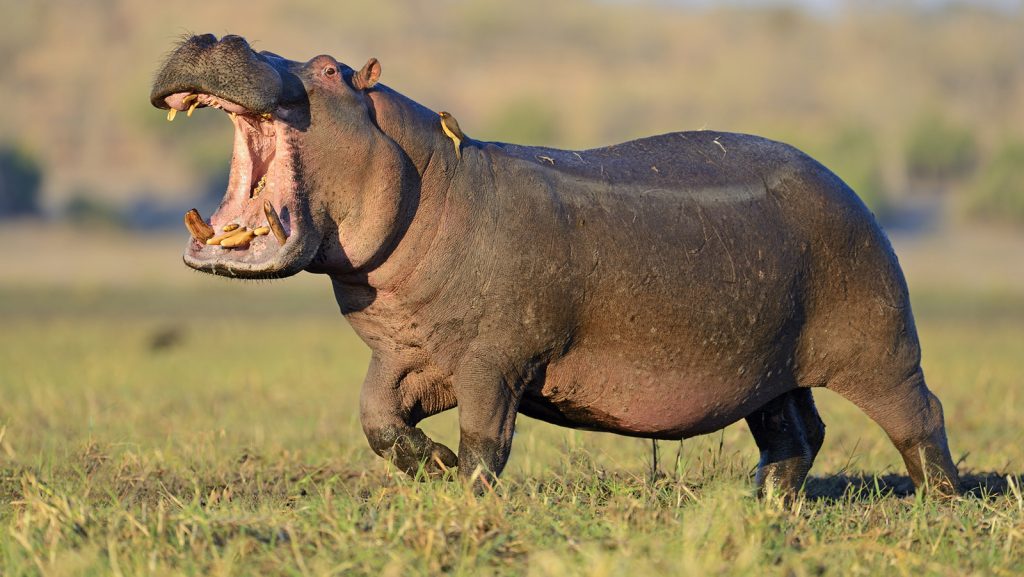
One of the most interesting facts about the hippo is its complex social structure. Hippos are highly territorial animals, particularly males, who defend their turf in rivers and lakes. However, despite their territorial nature, hippos are also very social animals and live in groups called pods.
The Structure of Hippo Pods
A typical hippo pod consists of 10 to 30 individuals, including females, their calves, and a dominant male. Males are generally territorial, and will define their area of control along part of the river or lake, and will protect this area against other male animals. Males interact with one another using their vocalizations, body language, and expressions of strength. They will frequently fight and use their tusks to bully or harm one another to display dominance.
The females will have close associations with their young within a pod. The females will raise their offspring in communal groups, and calves are frequently observed socializing with other young in the group. Hippo calves are born underwater, where they are able to nurse from their mothers while remaining submerged. Being in the pod offers a sense of security and safety against predators due to shared eyes and increased response to danger more efficiently within the group.
Social Interactions and Vocalizations
Hippos are known for their distinct vocalizations, which they use to communicate with each other. They are grunts, honks, and bellow used during long distances. They are particularly frequent in territorial confrontations, when males grunt and bellow to drive off challengers. They are also used in mating rituals and pod social activities. Interestingly, hippos are known to engage in “social bathing” when they interact with other animals in the water. They can communicate through mutual rubbing, which is rhythmic and might have both social as well as hygienic roles. In addition, hippos are often seen wallowing in the mud, which helps to protect their sensitive skin from the sun and parasites.
4. Hippos Secrete a Unique Substance Known as “Blood Sweat”
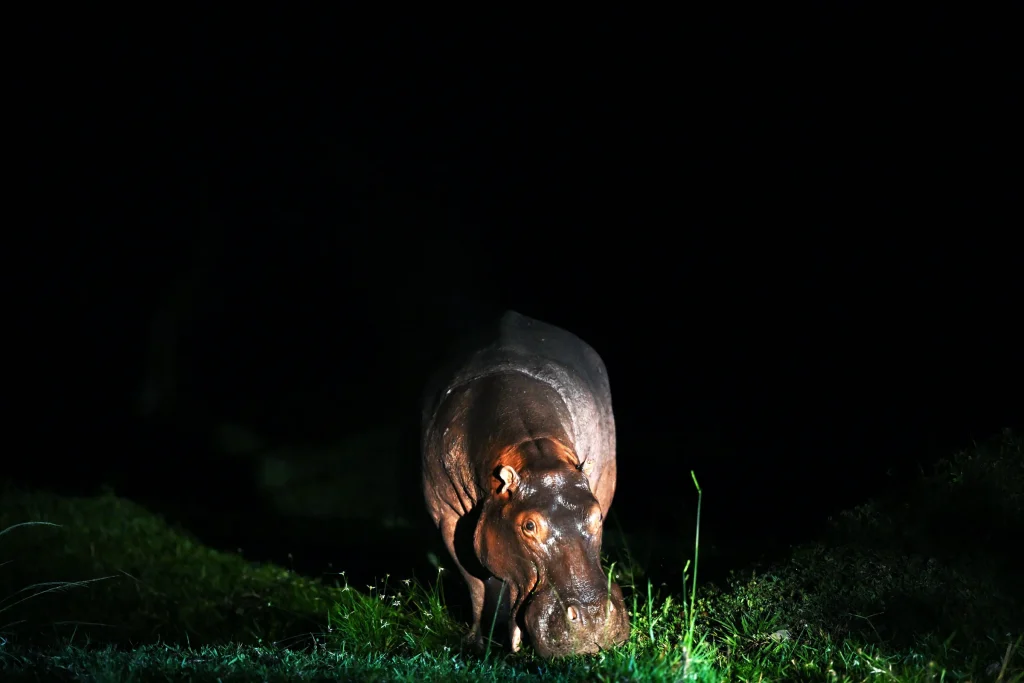
A lesser-known fact about the hippo is the secretion of a reddish substance often referred to as “blood sweat.” This secretion is produced by special glands located on the hippo’s skin and is often mistaken for blood due to its color. But it is not blood, but a natural excretion, which has several valuable uses.
The Function of “Blood Sweat”
The secretion is a combination of two compounds—hipposudoric acid and norhipposudoric acid—which give it its red hue. It is believed that this substance has antimicrobial properties, helping to protect the hippo’s skin from infection. It also acts as a sunscreen, shielding the hippo from the harmful effects of ultraviolet (UV) rays. This secretion is a response to heat and stress in the environment. When hippos are exposed to the intense sun, the “blood sweat” helps to cool them down and prevent their skin from drying out. The compound also works as a natural defence against damaging bacteria and parasites that can be found in the water. While the secretion may look like blood, it is harmless to the hippo and serves as an essential part of its survival strategy in the harsh African environment. The reddish tint is simply a result of the secretion’s pigmentation, which gives the hippo a unique and distinctive appearance.
5. Hippos Are Often More Dangerous Than They Appear
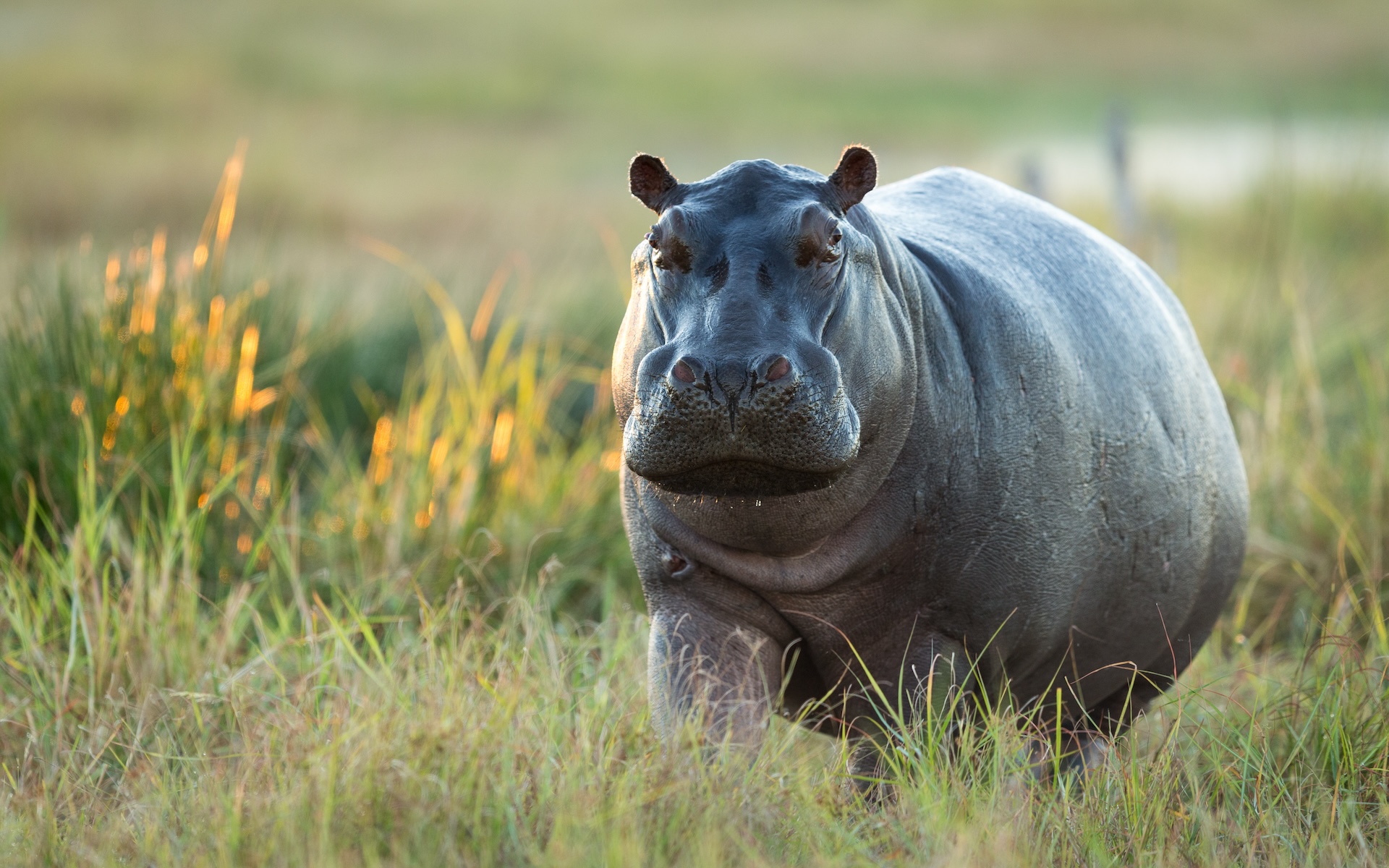
Despite their seemingly docile nature, hippos are considered one of the most dangerous animals in Africa. Each year, hippos are responsible for more human deaths than any other large animal on the continent, including lions and crocodiles. This fact about the hippo may seem surprising given their slow and gentle appearance, but hippos are highly territorial and will attack anything that threatens their space.
Aggression and Defense
Hippos are incredibly protective of their territory and their young, and they will not hesitate to attack if they feel threatened. A hippo’s size and strength make it a formidable opponent, and it can become highly aggressive if it feels its territory or family is at risk. Hippos have been known to charge boats and vehicles that venture too close to their territory, and their powerful jaws are capable of inflicting severe damage. Though they primarily spend their time in the water, hippos are also highly territorial on land. They can also be very violent towards other males or even animals that trespass into their territory. Hippos have sharp teeth and tusks that they use for fighting, and they can cause serious injury or even death with a single strike.
A Potential Threat to Humans
While hippos are not inherently aggressive toward humans, they can become dangerous if they feel cornered or provoked. Many of the human deaths caused by hippos occur when people accidentally venture into their territory while boating or fishing. The hippo’s ability to move quickly in the water and on land makes it a dangerous animal to encounter unexpectedly.
Conclusion
The hippopotamus is a fascinating and complex creature, with many remarkable qualities that set it apart from other animals. From its enormous size and strength to its aquatic lifestyle and territorial behavior, the hippo is a unique species with an array of adaptations that make it well-suited to its environment. Understanding these facts about the hippo helps to shed light on the incredible diversity of the animal kingdom and the importance of preserving these powerful creatures in the wild. While hippos may appear calm and slow-moving, they are in fact one of the most formidable animals in Africa, deserving of both respect and admiration.



